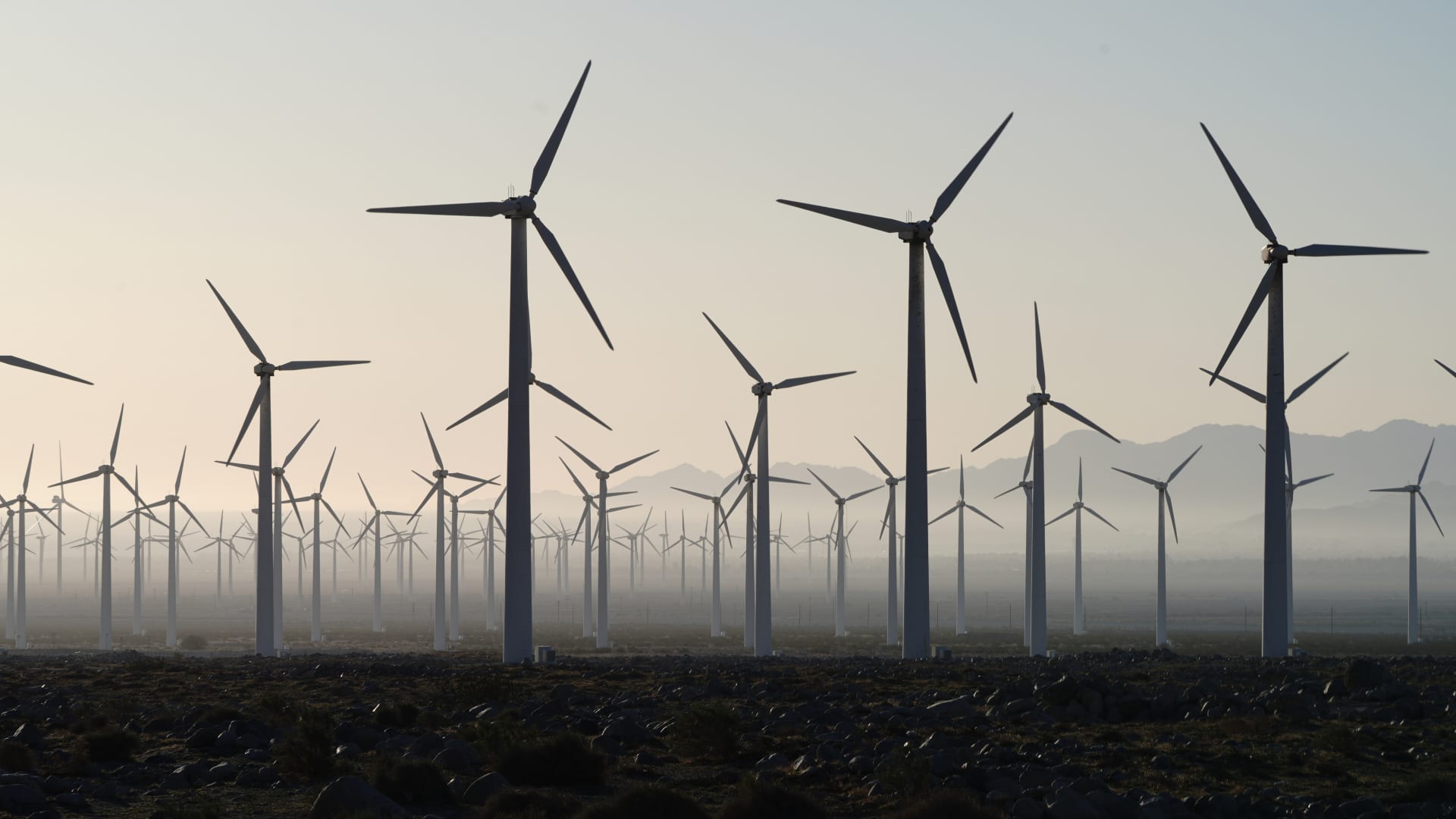These are not your grandparents’ power-and-light utility companies. The sector has come roaring back to life this year, defying an environment of higher-for-longer interest rates that would normally act as a headwind by raising the capital-intensive companies’ borrowing costs. Utilities as a group are up 18% over the past three months, far outpacing the broader S & P 500 as well as even technology stocks. Vistra Corp. has doubled over that period, while Constellation Energy is up nearly 62% and NextEra Energy has surged 34%. “This is not your old utility, where you just get a dividend and you’re happy,” Shahriar Pourreza, managing director of energy, power and utilities at Guggenheim Partners, told CNBC. “This is the strongest fundamental environment for the utilities base that I have seen in over 20 years,” Pourreza said. The recent rally in utilities has been driven by a shifting narrative away from interest rates and toward future growth catalysts, according to Pourreza. It’s a major comeback for a sector that dropped more than 10% in 2023, versus the S & P 500, which soared 24%. That was due in large part to headwinds from repeated interest rate hikes. Utilities are particularly sensitive to higher rates because they’re such a capital-intensive business. The sector was oversold coming into 2024, with the market going too far in pricing in the impact of interest rates, Pourreza said. While the Federal Reserve has been in no hurry to cut rates this year as stubborn inflation stays above 3%, Chair Jerome Powell has indicated that future hikes are unlikely. Futures traders are expecting rate cuts to start in either September or December. Investors are increasingly looking to the future and the pivotal role utilities will play in meeting electricity demand from data centers, the use of artificial intelligence, re-industrialization and robust residential power consumption as workers continue to use their homes as offices in the wake of the pandemic. ‘Energy transition supercycle’ Electricity demand in the U.S. could increase as much as 20% by 2030, according to a Wells Fargo research note from April. Data centers are expected to consume 8% of total U.S. power demand by the end of the decade, more than double their current rate, according to a Goldman Sachs report last month. The growing electricity load and the need to strengthen and decarbonize the grid requires much higher levels of capital spending, Pourreza said. Utilities are surging from 2% to 4% growth to rates of 6% to 8% or higher, he said. “That’s a huge acceleration of growth, and it’s just scratching the surface,” Pourreza said. The high levels of growth combined with yields of 3% to 4% means utilities could see 10% to 12% annual returns, he said. Stephanie Link, chief investment strategist with HighTower Advisors, described the current environment as an “energy transition supercycle” with $4 trillion in spending needed between now and 2050 on infrastructure and technology related to clean power, the grid, data centers and AI. “The other reason utilities have done well is because actually earnings have come in much better than expected, up 30% year over year,” Link told CNBC’s ” Closing Bell Overtime ” last week. “I think that picked up the attention of a few investors as well.” The rally in the utility sector is being driven by a subset of companies that are benefiting the most from data center hyperscalers and the demand for electricity, while traditional integrated power companies are not performing as well, said Paul Hickey at Bespoke Investment Group. Constellation, NextEra, Vistra The best way to play the data center angle is through utilities that have deregulated assets such as Constellation, NextEra and Vistra, Pourreza said. Power companies with deregulated assets are able to respond to market conditions more quickly than traditional utilities, he said. Constellation, NextEra and Vistra have rallied largely due to their exposure to the data growth trend, the analyst said. Constellation and Vistra operate deregulated nuclear plants, and investors are starting to price in opportunities for tech companies like Amazon ‘s Web Services division, Alphabet ‘s Google unit and Microsoft to contract directly with these assets for power, according to Pourreza. The tech sector is looking for clean energy to power data centers as they are simultaneously trying to limit their carbon footprints. “There are huge opportunities for data centers to contract directly with a nuclear plant, because it’s 24/7 power and it’s clean,” Pourreza said. NextEra, for its part, has deregulated renewable assets, such solar plus battery storage, that are attractive to the hyperscalers, according to Pourreza. “As the utilities get more leverage to different themes in the market – including data centers, domestic manufacturing, ESG movement – you’re going to see a wider base of investors to look at this space,” Pourreza said.
Utility stocks are on a tear as an ‘energy transition supercycle’ lifts the entire sector










